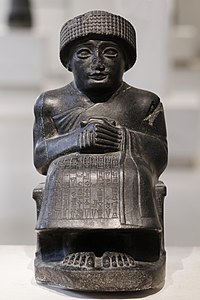
Photo from wikipedia
Abstract This study conducts a comprehensive estimation of aerosol optical depth (AOD) trend and a classification of types of aerosols over the Eastern Mediterranean (EM) region using the Modern-Era Retrospective… Click to show full abstract
Abstract This study conducts a comprehensive estimation of aerosol optical depth (AOD) trend and a classification of types of aerosols over the Eastern Mediterranean (EM) region using the Modern-Era Retrospective Analysis for Research and Applications, version 2 (MERRA-2) AOD and Angstrom exponent (AE) during 1980–2018 and MODerate resolution Imaging Spectroradiometer (MODIS) Collection 6.1/Terra and Aqua products during 2001–2018 and 2003–2018, respectively. Seven countries and sixteen cities were selected for the analysis. Evaluation of MODIS and MERRA-2 AOD with nine stations from the Aerosol Robotic Network (AERONET) AOD indicated spatial agreement. A new merged AOD product of MERRA-2 and MODIS (MMM) was generated. The performance of MMM not only indicated a better agreement than MODIS and MERRA-2, but also showed an efficient estimation compared to AERONET. Overall, MERRA-2 was able to quantitatively reproduce seasonal and annual AOD trends on regional scale compared to MODIS and MMM though slight differences were present in some areas. High AOD loading was mainly detected in the areas of natural mineral dust during spring and summer. Regional aerosol loading was relatively low in winter and autumn. Our results indicated that the AOD had an upward trend in the EM region during 1998–2018. Furthermore, AOD trend shifted from upward to downward around 2006 over all the countries. Our analysis revealed a dominance of clean maritime (42.95%) over the eastern part and the mixed type aerosols (34.93 and 49.13%) over the northern and southern parts. This suggests that the EM region is influenced by a variety of aerosols.
Journal Title: Atmospheric Environment
Year Published: 2020
Link to full text (if available)
Share on Social Media: Sign Up to like & get
recommendations!